German Original Sources
 15
15Mar
This is the second in a two-post series on using German records to trace ancestry. The previous article focused entirely on the unique and important source called Ortsfamilienbücher.
Unlike research in the United States, German genealogists almost exclusively use church registers to trace their family lines. Church registers in Germany are generally the most available of any of the record types that could be useful, and are the easiest historic source to use to compile family groups. Although many times an entire family tree can be researched only using church registers, there are places and periods for which the church registers are missing. Another important reason for diversifying the sources used is that these other German sources will help tell the story of a family beyond what a researcher can discover from church registers alone. Non-church sources include: census; occupational or guild records; marriage proclamation files; emigration/manumission; and Einwanderungszentralstelle (EWZ), Meldezettel/Meldekartei, as well as other migration or residence registrations.
Church registers are a record type already covered at length in many genealogical guides. Any researcher wishing to study these in depth is referred to any such guide. Kenneth L. Smith’s guide on German Church Books: Beyond the Basics is a particularly focused review of this record type.[1] German census records have also had an entire book written on their use for genealogical research, and any interested reader is referred to that book for a more in-depth study than could be possible in a single article.[2] Many of the listed records can often be found, at least in part, at the various German state archives. In many cases microfilm copies exist that are accessible through the FamilySearch Catalog or the Family History Library in Salt Lake City, Utah. Even those that have been doing German genealogy for some time, may have rarely seen records other than church registers. Unless the researcher is among the lucky few who will find the desired records have been microfilmed, it will usually be necessary to arrange research in the archives in Germany where the original records are held. This tends to make such in-depth research of German families out of reach for many who are interested. Fortunately, there is an increasing awareness in the genealogical community about the usefulness of these various original sources. For some records, such as guild or emigration records, some state archives have placed a name index in their online catalog. In this case, it can be more cost-efficient than first imagined to identify and obtain copies of such records. The catalogs are in German and require some practice to get used to them, so hiring a genealogist to check for said record availability can be most efficient. The same genealogist can contact the archive in your behalf to arrange the acquisition of copies. Even when there is no online name index, an experienced professional genealogist will know the right questions to ask to inquire with the archives directly for a copy of the ancestral records. In many cases this will require that an exact town of origin be already known. See the Price Genealogy blog articles on finding a German American immigrant ancestor’s town of origin: Part 1, Record Types and Part 2, Advanced Strategies.
Guild records are documentation of a man's membership in a guild, especially once he has retained the rank of master within the system of apprentice, journeyman, and master. These records can provide that little extra insight into an ancestor's occupation. While some church registers give occupation, many do not.
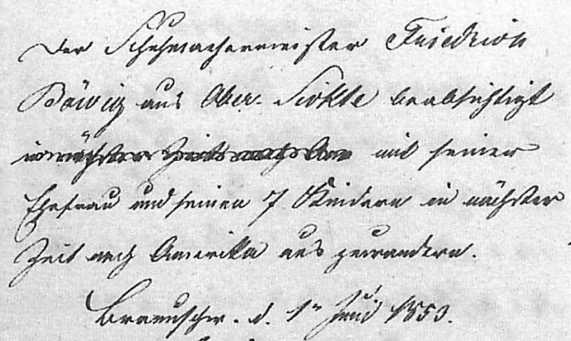
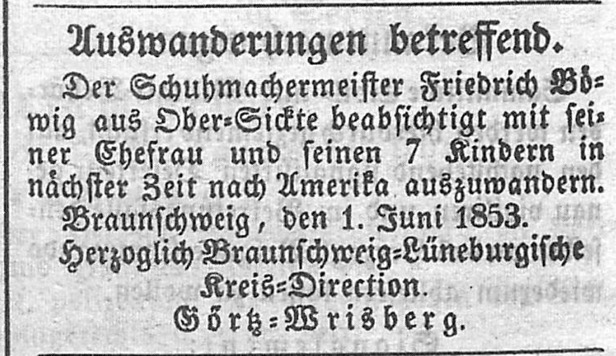
Emigration papers are useful as evidence that an ancestor of the same name who appeared in America shortly after was the same person listed on an emigration record. Using such records is especially important when the researcher needs additional evidence to strengthen the link between the United States and Germany. Sometimes these records give additional genealogical details such as occupation, number of children, if married, and names of those who emigrated with the man (especially other male head of households, if any). These records are sometimes referred to as manumission records due to the need of serfs to pay a tax to release themselves from serfdom before emigration. The pictured emigration record comes from the state archive at Wolfenbüttel. The record consists of six pages. A seventh page on file at the archives is a newspaper entry in which Friedrich Böwig announced his emigration. The pictured snippet from the record shows that shoemaker master Friedrich Böwig of Ober-Sickte with his wife and seven children are headed to America, dated 1 June 1853. The newspaper notice gives the same information.
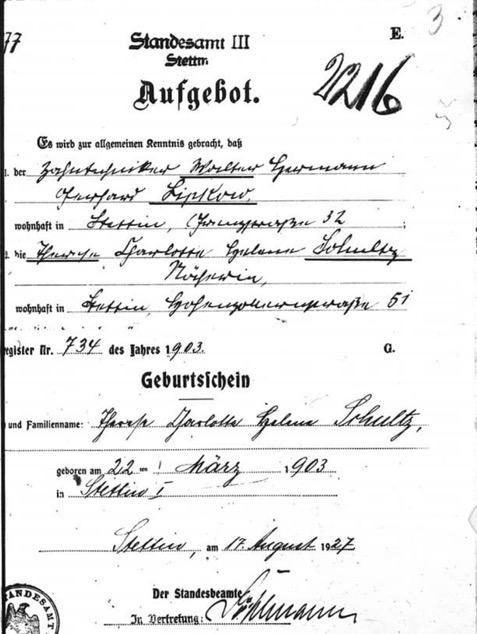
The Catholic church and some governments kept marriage proclamation files about couples applying to marry. There are marriage proclamations, dispensations, and banns, as well as several other terms that are used to refer to these marriage files. The multiple names used can lead to some confusion. For example, in United States research the term banns is often thought to refer to a simple entry in a church register giving a date on which the proposed marriage was announced in church. This often appeared three times in a church register before the marriage could take place. The term banns in German is "aufgebot," and is sometimes used to refer to the whole file. The term "proklomationen" is also commonly used to refer to the files. These often include information the marriage itself does not. Frequently these files include copies of the birth certificates for the bride and groom, information about the dates when banns were read, discussion of any potential or real complications related to the marriage, and other personal information about each party. In some cases, such as a dispensation created to allow the marriage of cousins, a family tree may be included. The Family History Library has several collections of marriage files for Germany.
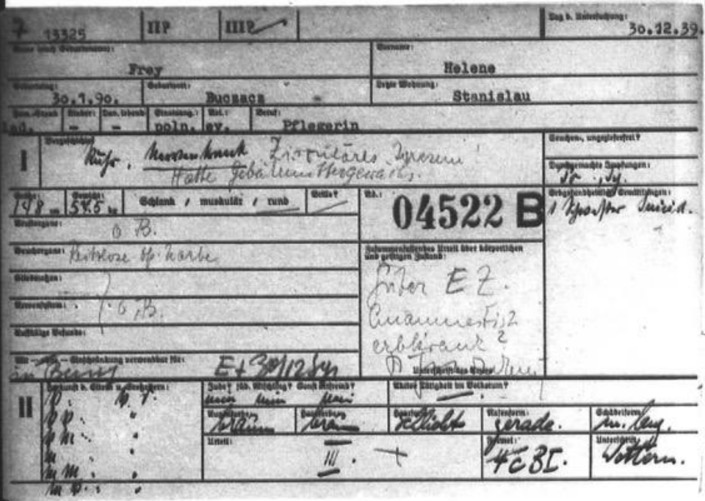
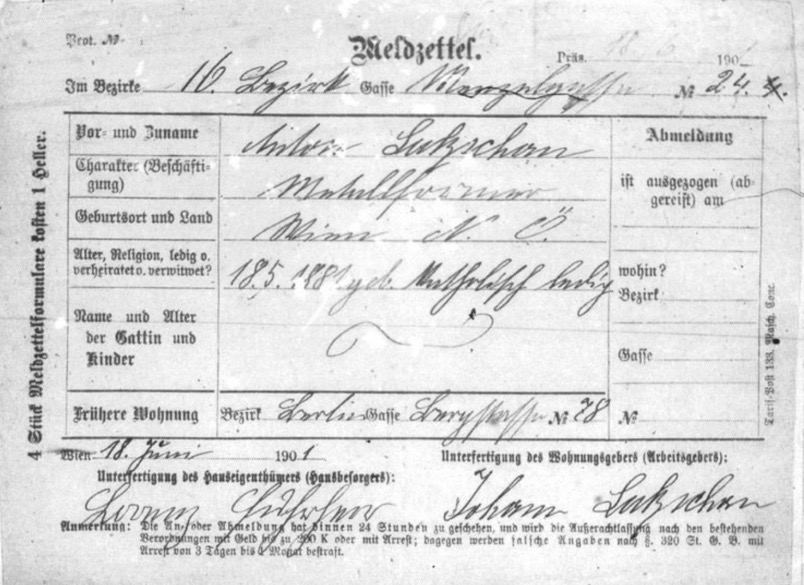
Einwanderungszentralstelle (EWZ), Meldezettel/Meldekartei, are examples of records about migrating or displaced peoples. Many of these are available at the Family History Library in Salt Lake City, Utah. EWZ stands for Immigration Center. During the period of World War II more than 400,000 applications were made to the EWZ for German citizenship. There is a series of phonetically arranged index cards with family information, many of which include a photograph of the applicant, and a series of "Stammblatt" (family trees) filed with the applications. To learn more about this collection, see the GenWiki of the Association of Computer Genealogy (Verein für Computergenealogie e.V.).[3] German law has long required the registration of residence, and for Vienna there is a particularly useful collection of such registrations available at the Family History Library covering 1850-1948, referred to as Meldezettel (registration forms) or Meldekartei (registration cards). These are comparable in appearance to the EWZ cards, but contain different fields. The forms for Vienna even vary over time. An example of one such form is pictured. The interested reader may learn more about the Viennese Meldezettel at the JewishGen website.[4]
There are numerous other sources available in Germany just as there are in the United States, even a seemingly endless number of potential sources. The research can be complicated due to the language, old German script, unfamiliar laws, and many records only being available in Germany. Fortunately, at Price Genealogy we have the expertise necessary to successfully research in Germany's unique record collections. Our German research experts look forward to helping you discover your German ancestry. Please inquire today.
Michael
[1] Kenneth L. Smith, German Church Books: Beyond the Basics (Rockland, Maine: Picton Press, 1993).
[2] Roger P. Minert, German Census Records 1816-1916: The When, Where, and How of A Valuable Genealogical Resource (Orting, Washington: Family Roots Publishing, 2016).
[3] Verein für Computergenealogie e.V., GenWiki, " Einwanderungszentralstelle (EWZ) Anträge" (http://wiki-en.genealogy.net/Einwanderungszentralstelle_(EWZ)_Antr%C3%A4ge : accessed 17 Dec 2018).
[4] Peter Lowe, Austria-Czech Special Interest Group, JewishGen, "Viennese Meldezettel (Registration Forms)" (https://www.jewishgen.org/AustriaCzech/TOWNS/Austria/meldezettel.htm : accessed 17 December 2018).
